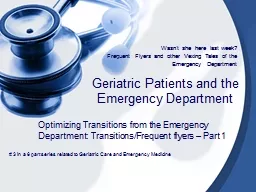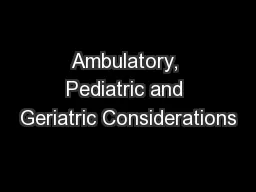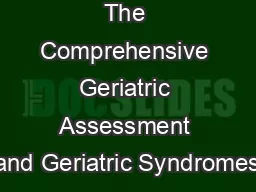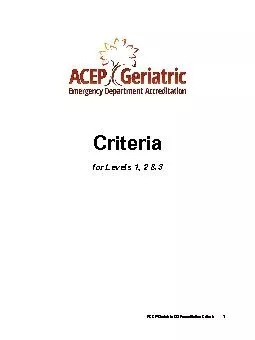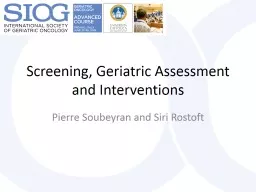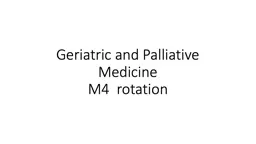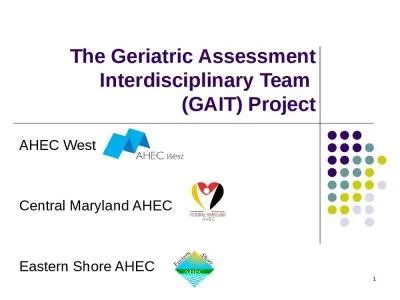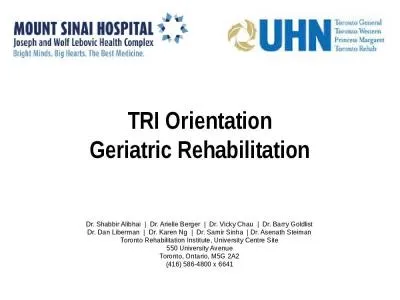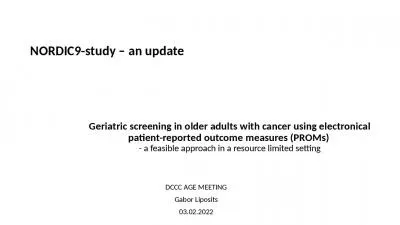PPT-Geriatric Patients and the Emergency Department
Author : alida-meadow | Published Date : 2017-04-27
3 in a 6 part series related to Geriatric Care and Emergency Medicine Wasnt she here last week Frequent Flyers and other Vexing Tales of the Emergency Department
Presentation Embed Code
Download Presentation
Download Presentation The PPT/PDF document "Geriatric Patients and the Emergency Dep..." is the property of its rightful owner. Permission is granted to download and print the materials on this website for personal, non-commercial use only, and to display it on your personal computer provided you do not modify the materials and that you retain all copyright notices contained in the materials. By downloading content from our website, you accept the terms of this agreement.
Geriatric Patients and the Emergency Department: Transcript
Download Rules Of Document
"Geriatric Patients and the Emergency Department"The content belongs to its owner. You may download and print it for personal use, without modification, and keep all copyright notices. By downloading, you agree to these terms.
Related Documents

